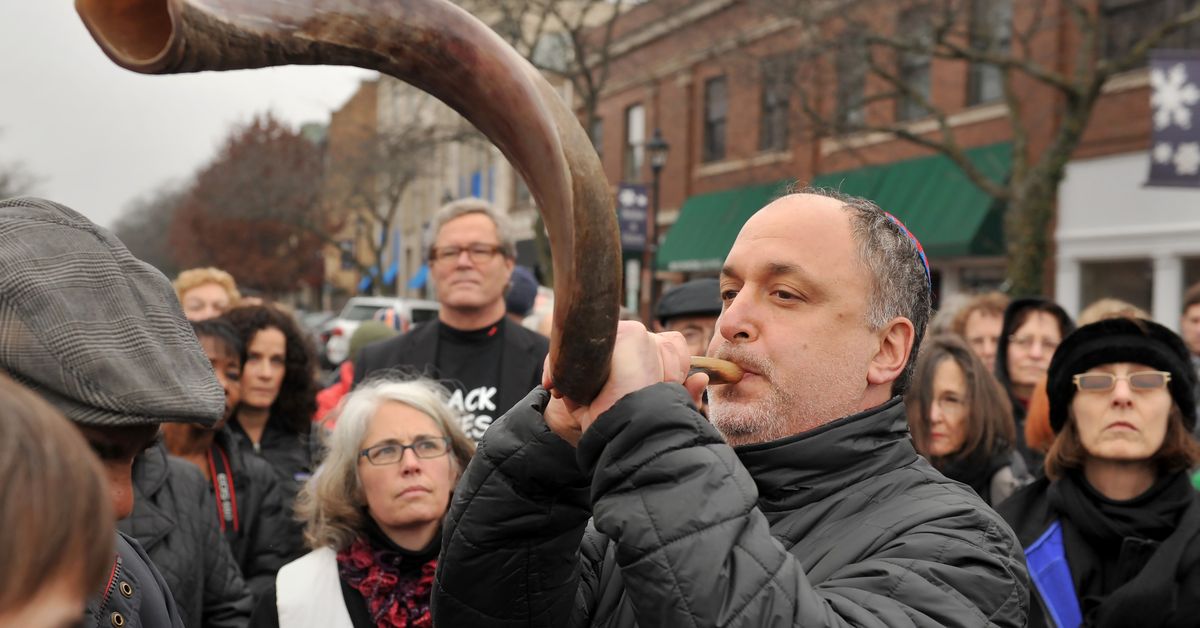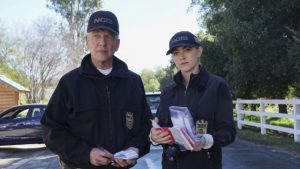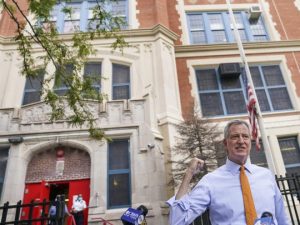The Jewish year of … checking … 5781 begins at sundown Friday, and is a reminder that the Chosen People are not newcomers at celebrating holidays during hard times. As grim as the COVID pandemic has been, it doesn’t hold a candle to Babylonian captivity or Roman persecution, the Inquisition or the Holocaust.
Not yet, anyway.
The business of maintaining Jewish identity, already under siege by modern life, is complicated in the Plague Year of 2020 as Judaism celebrates Rosh Hashanah — literally, “head of the year” — and then atones for sins in the year to come at Yom Kippur nine days later.
“This is an interesting year, unlike any other,” said Rabbi Steven Lowenstein, whom I called because his synagogue, Am Shalom of Glencoe, is one of many streaming high holiday services.
“We’ve been livestreaming for eight or nine years now,” he said. “We originally did it as part of our outreach to people who were sick or couldn’t come to services. This year is much more complex and more difficult.”
Complex because they can’t just turn one camera on the bima — the raised platform where services are conducted. The clergy are scattered, for their own protection.
“Now we are spread out in four different locations,” said Lowenstein. “Seven or eight different cameras, six different lecterns, socially distanced from everyone. We’re attempting to bring it all together.”
Rabbi Lowenstein is joined in the sanctuary by Rabbi Phyllis Sommer and Rabbi Pamela Mandel — it’s a big congregation, 1,000 families — while Cantor Andrea Rae Markowicz and Cantor Julie Staple are the social hall, the largest room.
”Singing is the most dangerous,” said Lowenstein. “They’ll actually be singing in different directions, so the spray is going in different directions.”
It’s a change for congregants, too. Standing in your living room in sweats is a different experience than putting on a suit and going to shul. Services are adjusted accordingly.
“We’ve shortened things a little bit because we know so many people are getting almost all of their content digitally,” said Dan Mutlu, a cantor at Central Synagogue in New York City. “Concerts, worship services, work meetings. A sense of a certain fatigue sets in. People are going to participate in different ways when they are home. They don’t have a congregation of hundreds around them. They might not be as ready to sing a refrain four times. They might have the stamina to sing two stanzas.”
Since Jews don’t generally pass a collection plate, synagogues often charge for membership and extra for tickets to high holiday services, the one time a year even weak-tea Jews such as myself are flushed from hiding. But many synagogues aren’t charging this year. The Chicago Board of Rabbis lists 36 congregations streaming services free to non-members.
“We’ve opted to not password protect, to make our services available to everyone,” said Lowenstein.
Why?
“‘Our house shall be a house of prayer for all people,’” he said, quoting Isaiah. “While we lost revenue from high holiday ticket sales, for the most part our members have stepped up.”
Central Synagogue is the powerhouse of livestreaming, reaching hundreds of thousands of people in over 100 countries. I’ve dropped in on their high holiday services for the past three or four years because I like the ornate building, quick service and radiating ruach —spirit — of Rabbi Angela Buchdahl, the first Asian American ordained a rabbi. They began livestreaming in 2008.
“From the beginning, we wanted to make it free and accessible to anybody,” said Mutlu.
Of course religious life continues off-line, in the living world, albeit gingerly. The Lubavitch, a sect of the Orthodox Hasidic movement, are holding hundreds of street corner soundings of the shofar — the animal horn blasts ushering in the New Year. They’ve created a Shofar Outdoors search engine to help hook those interested find local shofar blowings.
“Those not going to any services can go a few blocks outside, put on a mask, stay socially distant, and hear the shofar,” said Rabbi Meir Moscowitz, regional director of the Lubavitch Chabad of Illinois.
People who see the black hats and the beards and think of the Amish might be surprised at how energetically the Lubavitch embrace modern communications.
“We are very into technology,” said Moscowitz. “Most things in the world can be used for good or bad. It’s our job to utilize it for the right things. Way back when television became popular, they used to broadcast the Rebbe’s teachings.”
By “Rebbe,” he was referring to Rabbi Menachem Mendel Schneerson, the revered seer of the Lubavitch movement.
“Some questioned using these new things in this way,” continued Moscowitz. “The Rebbe explained that the whole point of these technologies is to use them for something good. Why else do we have the internet if not to use for torah study and connecting with each other? This is why we have it.”



















